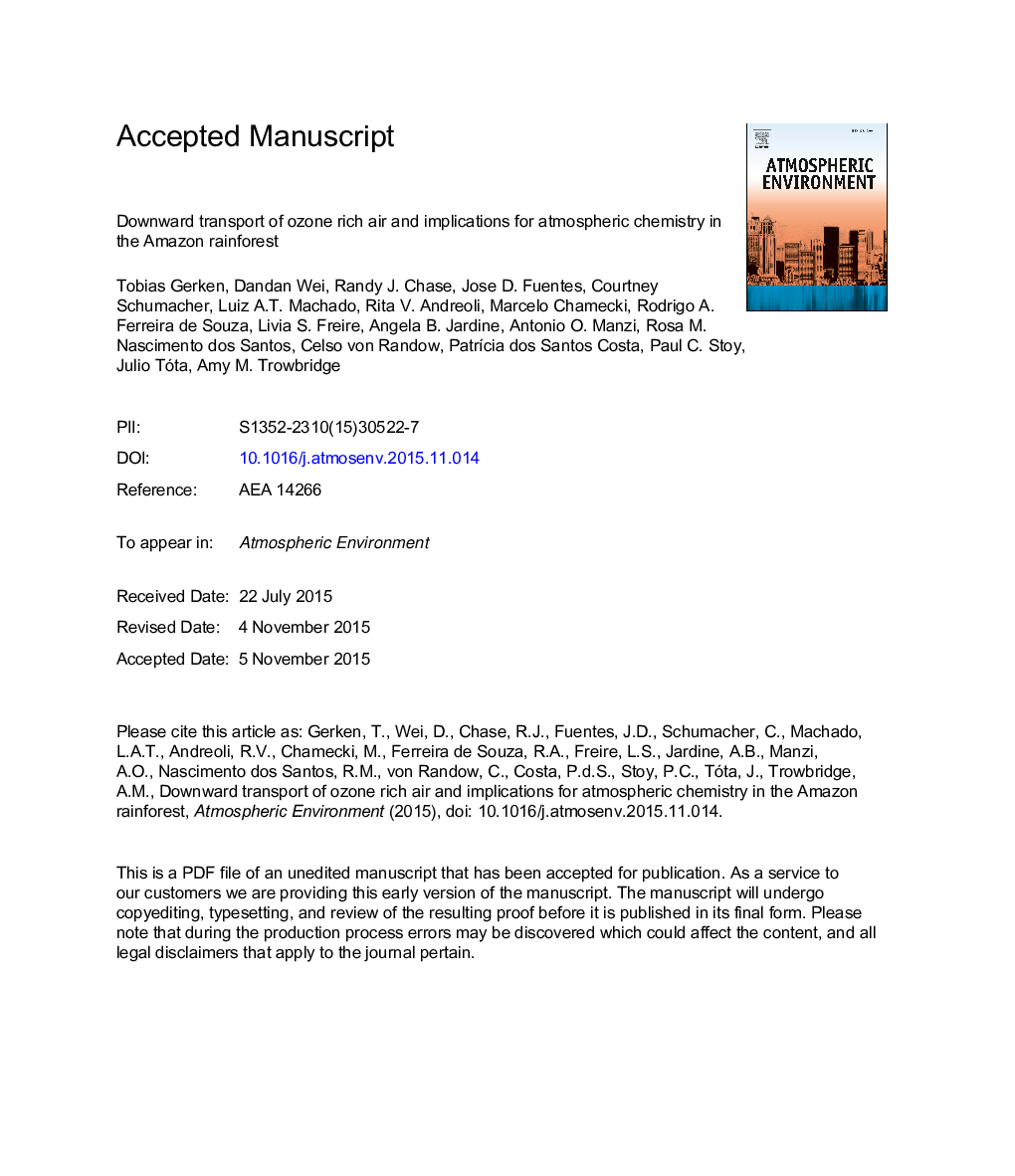| Article ID | Journal | Published Year | Pages | File Type |
|---|---|---|---|---|
| 6336934 | Atmospheric Environment | 2016 | 35 Pages |
Abstract
From April 2014 to January 2015, ozone (O3) dynamics were investigated as part of GoAmazon 2014/5 project in the central Amazon rainforest of Brazil. Just above the forest canopy, maximum hourly O3 mixing ratios averaged 20Â ppbv (parts per billion on a volume basis) during the June-September dry months and 15Â ppbv during the wet months. Ozone levels occasionally exceeded 75Â ppbv in response to influences from biomass burning and regional air pollution. Individual convective storms transported O3-rich air parcels from the mid-troposphere to the surface and abruptly enhanced the regional atmospheric boundary layer by as much as 25Â ppbv. In contrast to the individual storms, days with multiple convective systems produced successive, cumulative ground-level O3 increases. The magnitude of O3 enhancements depended on the vertical distribution of O3 within storm downdrafts and origin of downdrafts in the troposphere. Ozone mixing ratios remained enhanced for > 2Â h following the passage of storms, which enhanced chemical processing of rainforest-emitted isoprene and monoterpenes. Reactions of isoprene and monoterpenes with O3 are modeled to generate maximum hydroxyl radical formation rates of 6Â ÃÂ 106âradicalsâcmâ3sâ1. Therefore, one key conclusion of the present study is that downdrafts of convective storms are estimated to transport enough O3 to the surface to initiate a series of reactions that reduce the lifetimes of rainforest-emitted hydrocarbons.
Related Topics
Physical Sciences and Engineering
Earth and Planetary Sciences
Atmospheric Science
Authors
Tobias Gerken, Dandan Wei, Randy J. Chase, Jose D. Fuentes, Courtney Schumacher, Luiz A.T. Machado, Rita V. Andreoli, Marcelo Chamecki, Rodrigo A. Ferreira de Souza, Livia S. Freire, Angela B. Jardine, Antonio O. Manzi, Rosa M. Nascimento dos Santos,
